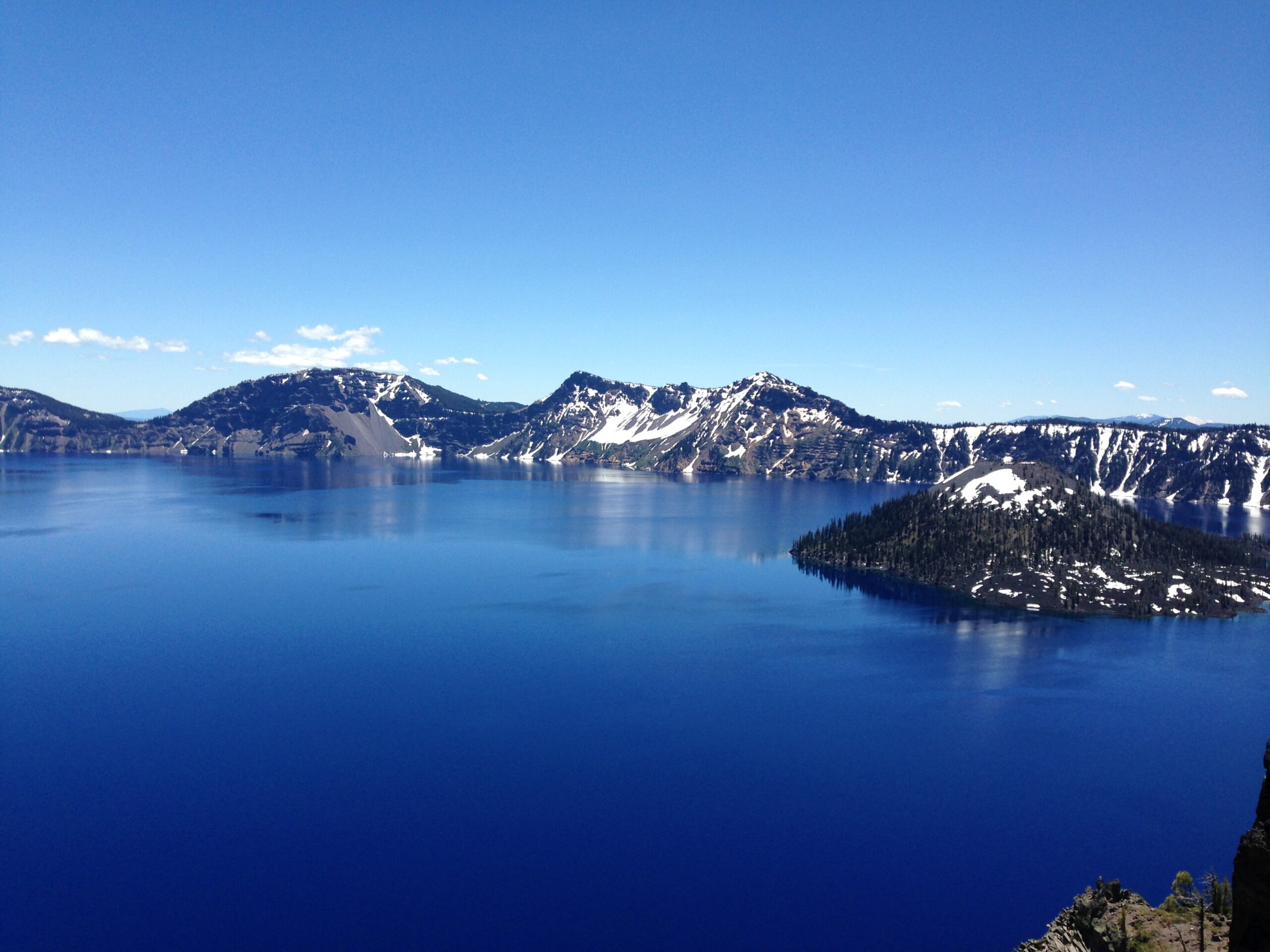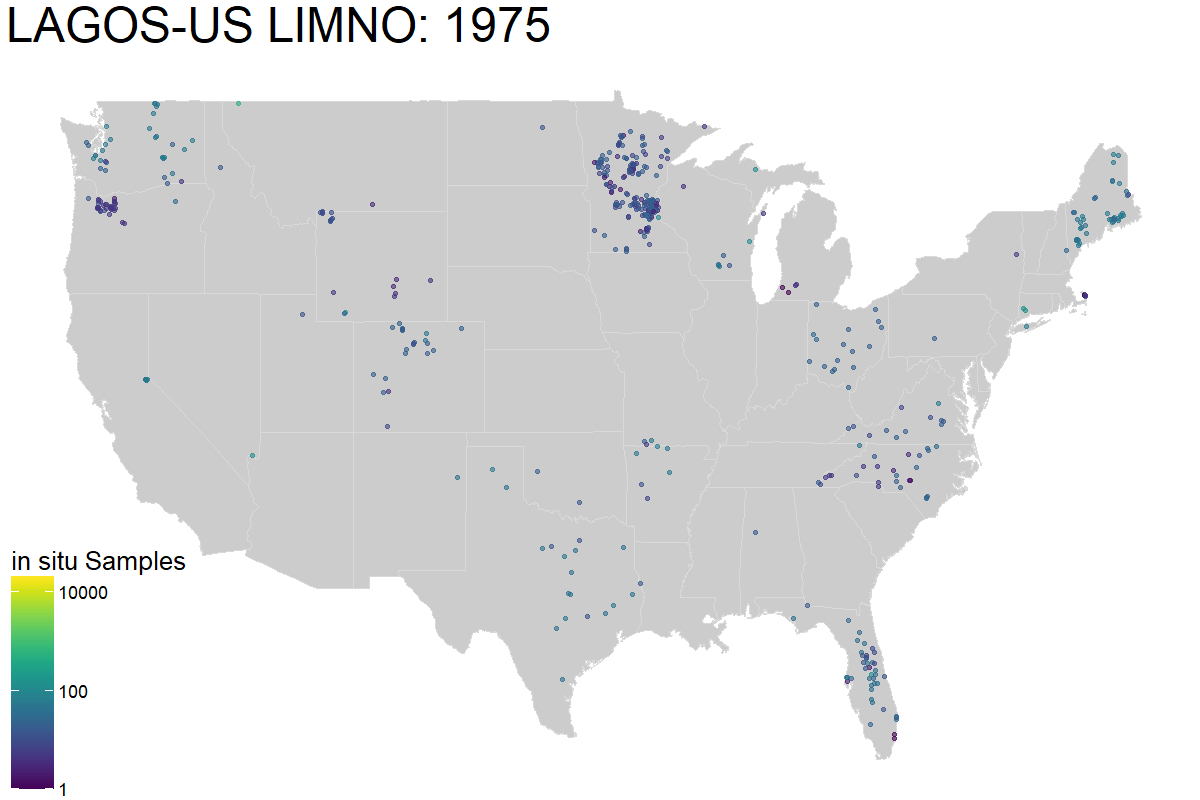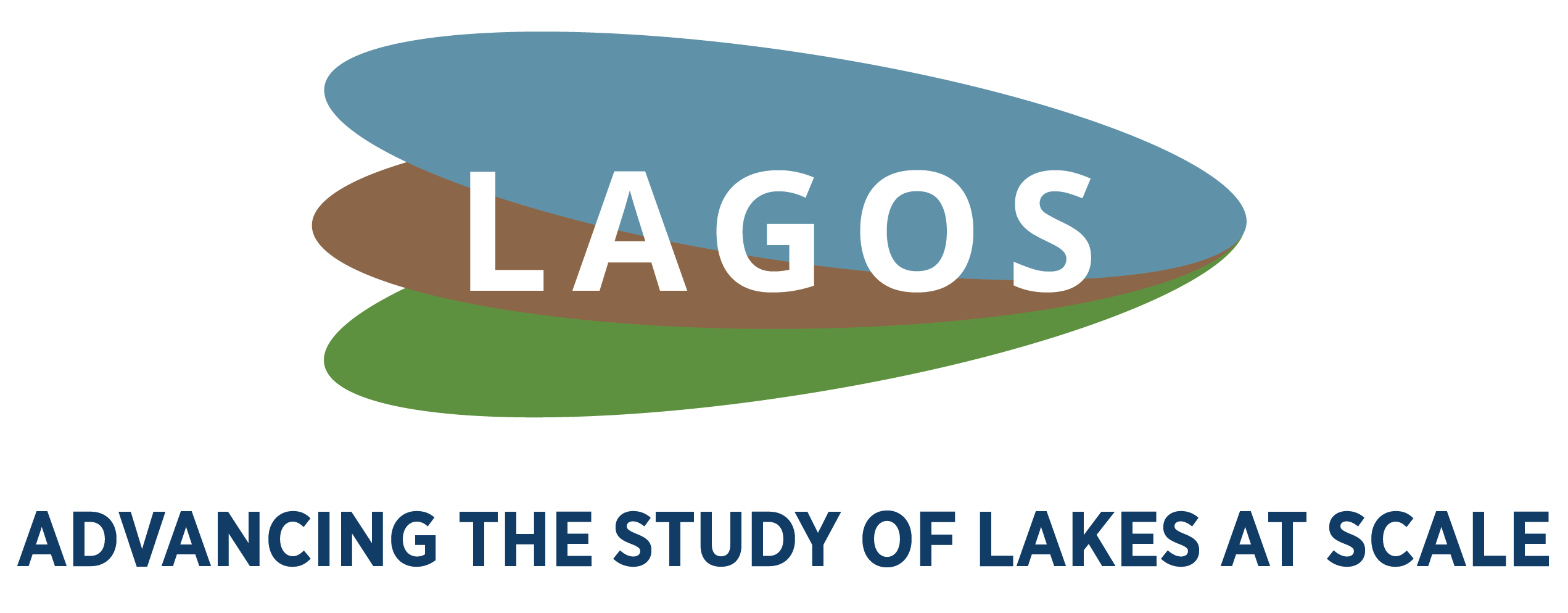
About the LAGOS
Research Platform
An open-access research platform for studying lakes across space and time
The LAGOS research platform design and products provide a blueprint for lake research at broad scales of space and time. LAGOS is made up of two different platforms (LAGOS-NE and LAGOS-US) that are distinct and have some different methods, but also have very much in common and are interoperable.
Because the LAGOS research platforms are designed to enable the study of populations of lakes across broad environmental gradients, they include not only lakes and their watersheds, but also the hydrologic, geomorphic, climatic, and human impact characteristics (i.e., ecological context) needed to holistically study lakes and their landscapes.
This LAGOS blueprint will enable others to develop interoperable research platforms in other countries and continents, ultimately providing the needed infrastructure for global lake research.

Figure 1. In situ sample locations of lakes in LAGOS-US LIMNO appearing through time (1975-2021).
LAGOS facilitates an interdisciplinary and broad-scale understanding of lakes so that researchers can address environmental grand challenges and and inform lake management, environmental policy, and public engagement.
LAGOS was created with tools, methods, and perspectives from macrosystems ecology, landscape limnology, data-intensive science, team science, and open science.
LAGOS was created by a highly collaborative group of researchers from the disciplines of ecology, limnology, geographic information science, ecoinformatics, machine learning, team science, and statistics. LAGOS was created with tools, methods, and perspectives from macrosystems ecology, landscape limnology, data-intensive science, team science, and open science.
Key Components of the LAGOS Research Platforms
Theory
Landscape limnology & Macrosystems ecology
The research teams that designed and developed the LAGOS research platforms also helped to develop the conceptual frameworks for the subdisciplines within which they are grounded – landscape limnology and macrosystems ecology. This theoretical and conceptual work ensured that LAGOS would provide the data needed to answer a wide range of research questions to advance understanding of macroscale lake ecology.
Database Design & Functionality
Temporal and spatial data & identifiers to link to other databases
LAGOS includes data at several spatial extents (e.g., lake, watershed, ecoregion) and temporal extents (e.g., monthly, annual, 30-yr normal). The LAGOS unique identifier (lagoslakeid) is linked to identifiers from other common national-scale databases for US lakes to enable interoperability with other data sources. The platform is designed to be accessible and extensible, which means that it includes extensive documentation (e.g., User Guides).
Quantitative Tools
Approaches for data-intensive macroscale lake research
Throughout its development, LAGOS researchers developed tools for analyzing large, complex, multivariate datasets including approaches for multivariate error assessment, joint modeling, and ecoregion delineation. These tools are publicly accessible, along with the data modules and documentation.
Open Science & Team Science
Data-intensive macroscale lake research is facilitated by open science and team science
Since the beginning, the LAGOS research platforms were designed and developed by an interdisciplinary team that championed open science principles, offering unrestricted access to LAGOS data and resources. We encourage effective collaboration among scientists worldwide, which will be essential to drive innovative research and global initiatives in lake research, conservation, and management.
Photo credit: Crater Lake, OR by Ian M. McCullough.
